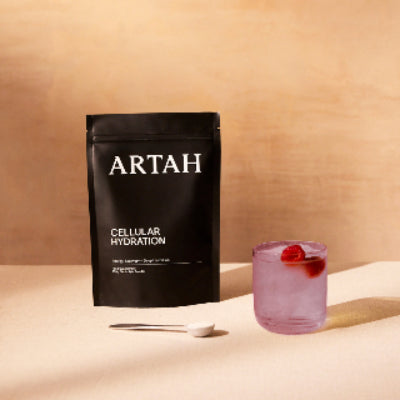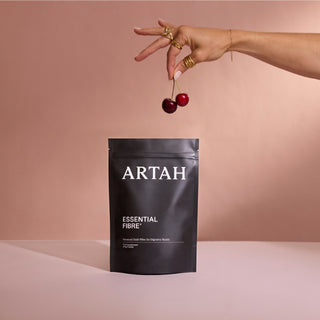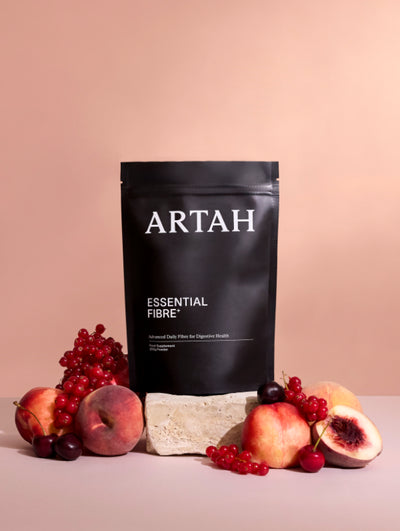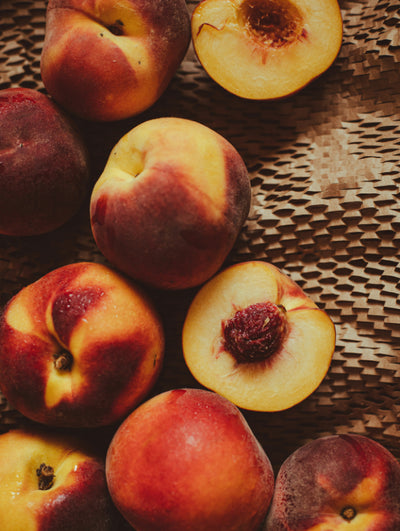What if we told you that potato salad is healthier than you think? While we don't warrant a bath of mayonnaise, we at Artah HQ are huge proponents of next-day potatoes. Why? Two words: resistant starch. Found in a myriad of different plant sources (think oats, nuts and green bananas), resistant starch is our favourite new health trend because of its effects on metabolism, immunity, and energy. Here's everything you need to know, and why you should probably consider adding it to your diet.
What is resistant starch?
Most of the carbohydrates we eat (such as grains and potatoes) are starches that are formed of long chains of glucose. They get digested much like the other foods we eat, but there are some forms of starch that bypass the digestion process. “Put simply, resistant starch is a kind of starch that our body cannot digest,” says registered dietitian Nichola Ludlam-Raine. “It instead acts like fibre, passing through our digestive system where it then becomes resistant to digestion,” she adds.
What are the benefits of resistant starch?
Since resistant starch functions more like soluble fibre, it can bring a multitude of health benefits to our internal systems. Here are four worth noting:
1. Resistant starch can help improve digestive function + gut health.
Undeniably one of the biggest benefits is that it can help support our digestive system in several ways. “This is due to the fact that resistant starch acts as a naturally occurring prebiotic, fermenting in the large intestine (undigested) which then produces short fatty chain acids (SCFAs) which help to keep our gut healthy,” says Nichola. Often dubbed a superfood for our digestive system, it’s even said to help reduce inflammation in the gut too since these short chain fatty acids help to provide fuel for the cells which help to line the colon. By doing so, this can then help reduce the effects of digestive disorders such as constipation, diarrhoea, IBS and Crohn’s disease.
2. Resistant starch can help our immunity.
Never before have we been so aware and conscious of our overall health and ability to fight infection so this benefit will undoubtedly be of interest. “Since it’s estimated that 70% of our immunity is found within our gut, it’s essential we keep it as healthy and diverse as possible,” says nutritional therapist, Alice Mackintosh who emphasises the importance of having a well-balanced gut microbiome. “The beneficial bacteria in our gut acts as a first line of defence against less beneficial bacteria, viruses and food-borne pathogens and consuming resistant starch can really help to support this and keep your immune system working healthily.”
3. Resistant Starch can help improve insulin sensitivity and lower our blood sugar levels.
“Another key benefit is that resistant starches can help to reduce the glycaemic index (GI) of the foods we eat meaning we then get a slower release of sugar into the blood stream,” says Alice. This not only helps to balance our blood sugar levels, but it means we don’t release as much insulin in response. “When sugar is released into the bloodstream quickly, the pancreas releases insulin to allow us to absorb that sugar into our cells. Over long periods of time, high levels of insulin in our blood can lead to insulin resistance, so eating foods that can reduce the body’s need to release higher levels of insulin is beneficial for our long-term health,” she explains. It’s also widely believed that having low insulin sensitivity (or insulin resistance) can be detrimental when it comes certain health concerns. “Foods higher in resistant starch can have a reduced impact on postprandial (after you’ve eaten) blood glucose levels in comparison to easily digested carbs so they can be beneficial to those with type 2 or pre-diabetes,” says Nichola.
4. Resistant starch can be beneficial for weight management and fasting.
Lastly, resistant starch can bring several metabolic-boosting benefits too. Not only do resistant starches tend to have fewer calories per gram than regular starch, but they can also help in other ways. “If you have a goal to lose weight, they can help to keep you feeling fuller for longer and help to curb your appetite,” says Nichola. This effect is largely down to the fact resistant starch is slower to digest and therefore lingers in your system so you won’t find yourself needing to snack and longer periods of fasting should feel more manageable.
What are the best food sources of resistant starch?
Resistant starch can be found in plenty of foods we’re all eating every day but as Alice mentions, there are different types of resistant starches to look out for. “Type 1 is typically found in nuts, seeds, beans and legumes, whilst type 2 includes green (or unripe) bananas and green banana flour which is a great alternative flour choice for baking and is one of the best sources of resistant starch available,” says Alice. When bananas ripen and go brown, the starch in them converts to sugar which is more easily digested. “Lastly, type 3 is primarily found in potatoes, pasta and rice,” says Alice.
One thing worth noting is that the amount of resistant starch within these foods can change depending on how they are cooked and prepared. “This is because when we cook our food and expose it to heat and moisture, the chemical structure changes,” says Nichola. “Carbohydrates which have been cooked and then cooled (such as cold pasta) have a higher amount of resistant starch compared to pasta that’s just been cooked,” she adds. Allowing a banana to ripen and turn yellow, also results in the resistant starch degrading.
How to get more resistant starch in your diet.
Increasing the amount of resistant starch in your diet isn’t too difficult. To top up your levels of, try being more mindful of eating cooked and cooled foods (another reason to enjoy leftovers!). One of the best sources of resistant starch is green banana - whilst these aren’t as palatable as aren’t as ripe bananas, there’s ways to get around this. You can grate them into porridge, pancake batter or savoury dishes. You can also use it in supplemental form - try adding a spoonful of green banana flour to your smoothie or taking it in capsule form. Try our G.I. Fix for your daily dose of resistant starch as well as prebiotic, probiotic and anti-inflammatory gut support. SHOP G.I. FIX


















































